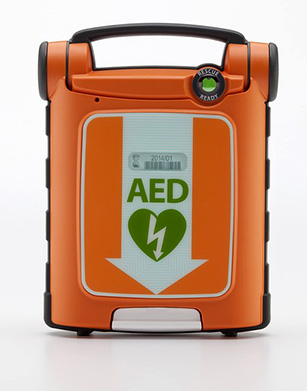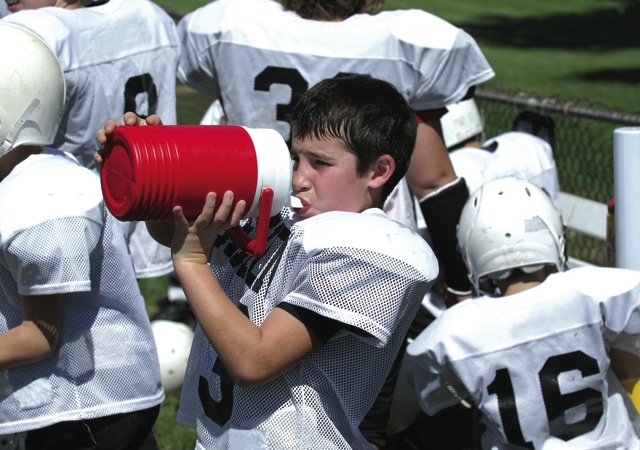21 tips on reducing sports injuries
“Redux” means brought back or restored. The word is appropriate, as we have moved from a pre-1960 attitude of “injuries are part of the game,” to becoming aware that there are ways to lower the chance of injury, to what I see today as a kind of complacency. Contentment is the enemy of reducing the risk of injury.
 The following is a brief reminder of ways to keep sport safety on the front burner and the lawyer away from your gym door. We always need to reboot, improve and be reminded about ways to reduce injuries. Safety is not a one-time thing.
The following is a brief reminder of ways to keep sport safety on the front burner and the lawyer away from your gym door. We always need to reboot, improve and be reminded about ways to reduce injuries. Safety is not a one-time thing.
21 safety tips
1. Risks will not go away. Risks and challenges are part of sport.
2. Lowering the chance of injury is a continual job. You cannot ensure the safety of anyone, but what you can and should do everyday is eliminate or lessen the chance of someone getting hurt. If you haven’t made sure your wrestler is physically ready to compete, you have not lowered the chance of injury — you have increased it.
3. An attitude of caring about the welfare of those in charge first and foremost helps more than any piece of protective equipment.
4. Your legal duties are the same as your coaching duties. You need to offer instruction, supervision, and appropriate equipment and facilities while knowing what to do when there is an injury.
5. Have an emergency plan. What do you do when there is an incident? All coaches should have a plan of action that has been developed with the input of the athletic administration and athletic trainer. It should be written and understood by everyone in your program.
6. The injured athlete takes precedent over everything. Do not move the athlete if there is any question of a head, neck, back or fracture. Seek a higher level of medical help. Keep spectators and your team away. Also have access to all related phones and if there is any doubt in your mind, call 911. Be specific in answering all questions when talking to the emergency operator. Utilize your assistants or parents to direct emergency responders to the site.
7. The emergency plan should be reviewed on a regular basis. Coaches should obtain first aid, CPR and automated external defibrillator training.
8. Every coach should have a cell phone that contains all necessary phone numbers.
» RELATED: Mentally coping with debilitating sports injuries
9. Listen to your athletic trainer. The trainer, not the coach or athletic director, make the medical decisions. The athletic trainer also checks with the team doctor. If you don’t have an athletic trainer, do what you can to get one. He or she is a major asset in helping to reduce the number of injuries.
10. Avoid mismatching, meaning don’t pit a senior football player against a new sophomore on day one of practice. Does the varsity defensive line really get something out of working against the JV offense?
11. Remind the athletes of their roles in injury prevention, both for themselves and teammates. Establish safety rules, post safety rules and follow them.
12. Make sure you and your staff remain current, not only on the rules of the game but any new safety regulations, such as protective eye glasses in girl’s lacrosse and pole vault landing pad standards.
13. The American Journal of Sports Medicine reported that during a 20-year period there were 62 deaths due to brain injury and 38 from heat-related illnesses in football. Coaches should know this and the ways to avoid such tragedies. Hydration and rest are part of practice and games.
14. Supervision includes the locker room and does not ensure the freedom from harm on the playing field or anywhere else. Supervision is controlling the environment by having knowledge about the activity, the area and the individuals under your charge.
The fact that each person is not personally supervised every moment does not constitute a failure to meet your supervisory duties. Neither does the spontaneous split–second act by a player mean you failed to supervise. The locker room is an area that too often is neglected. Horseplay, wet floors, equipment on the floor and the coach’s absence can lead to unwanted results. One coach can scan the locker room prior to practice and do so again after practice, while the athletic trainer or a school monitor can maintain a presence at other times during practice. Players should know that supervisors are present.
» RELATED: Understanding and preventing football injuries
15. Make sure all your players are warmed up. The girl that comes late to practice must still warm-up before entering the field hockey scrimmage.
16. Record keeping is part of safety. No one plays or practices without a physical and informed consent form. Accident and return to play forms are other examples of records to maintain.
17. Check equipment and fields on a regular basis. Yesterday’s reasonable field or wrestling mat may not be so the next day. Safety is a day-to-day business.
18. Use equipment and facilities only as intended. The soccer goal is not for team chin-ups. Bleachers and hallways are not for running.
19. Adjust you practice plan when you must practice inside due to inclement weather. The planned lacrosse scrimmage can wait until you get back outside.
20. Use only equipment from reputable dealers. Avoid untested, untried equipment. Also avoid homemade equipment. A colleague once tied a softball on the end of a rope. The idea was for a player to kneel and swing the ball in a circle. A batter stood outside the circulating ball and attempted to hit the ball as it approaches. This, according to the inventor, would permit more batting practice. When the first few swingers were hit in the eye or almost strangled by the rope, normal batting practice was resumed.
21. Attend all coaching certification meetings and make sure you and your staff is certified. Being a professional means you continually learn and improve your overall knowledge.
If you don’t care about safety, neither will anyone else. You are the role model. Caring and remaining vigilant every day should be your top priority. The health and welfare of young people is not rocket science — it’s more important than that.





